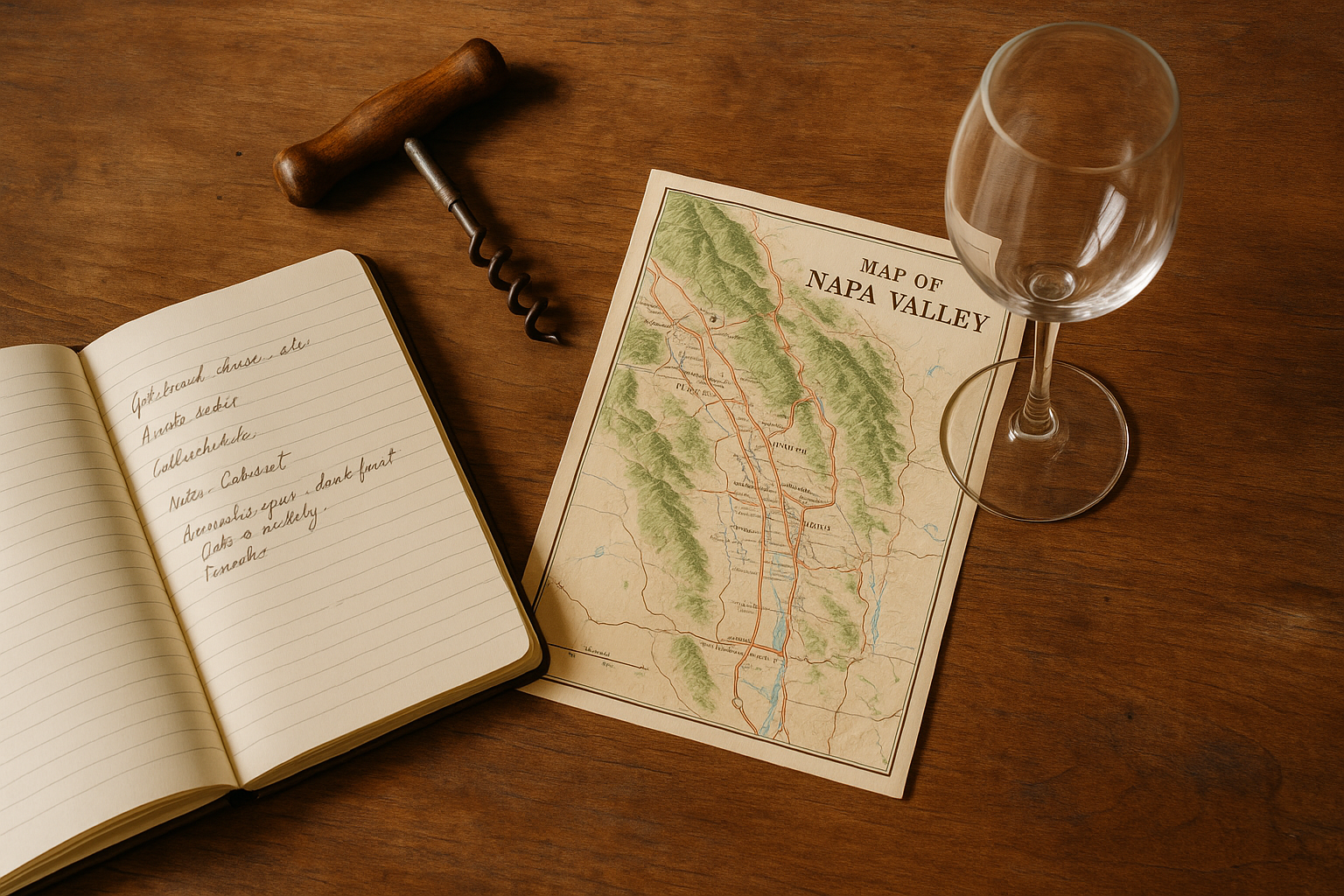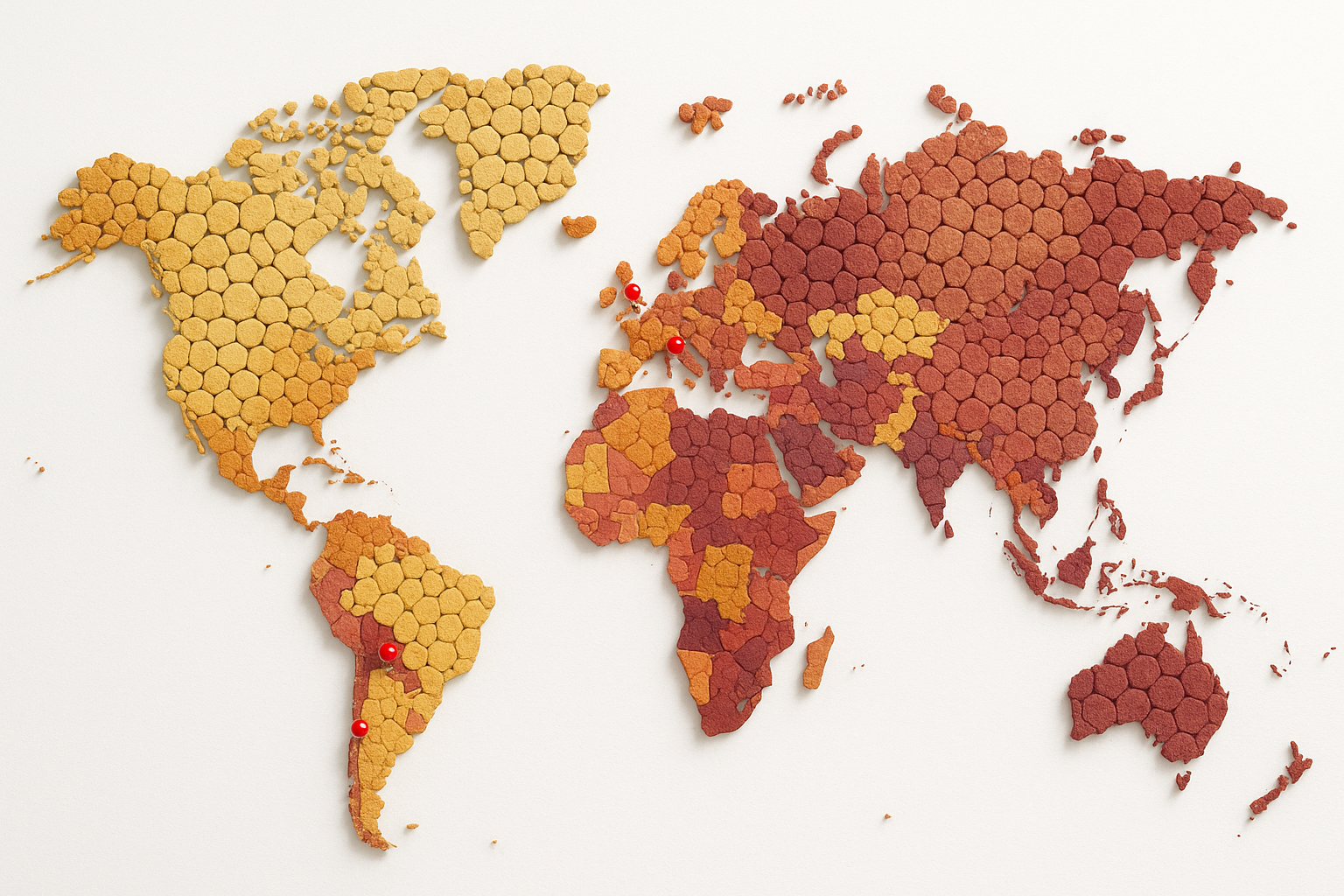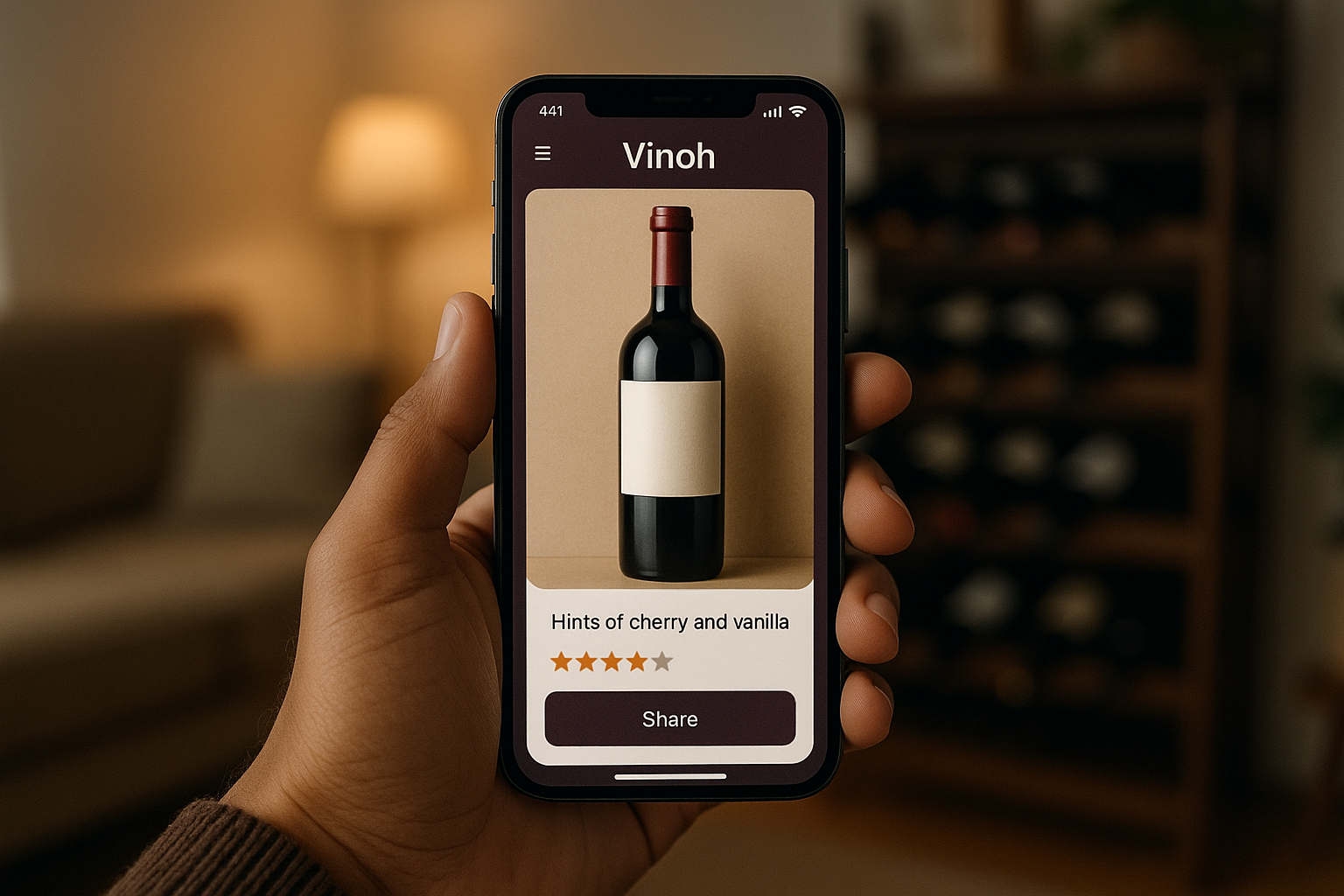Wine Tasting Etiquette: Do's and Don'ts for Your First Flight
Our guide to wine tasting etiquette covers the do's and don'ts for your first flight. Learn how to taste wine like a pro, from holding the glass to what to say
11 minutes
So, you’re going wine tasting! How exciting. You might be picturing beautiful vineyards, shiny glasses, and delicious new flavors. But you might also be feeling a little nervous. What if you do something wrong? What if you can’t smell “notes of oak and blackberry”? What if everyone else seems like an expert?
Take a deep breath. Wine tasting is not a test. It’s supposed to be fun! Think of it as an adventure for your mouth. The whole point is to figure out what you like, not what someone else tells you to like. It’s your journey, your palate.
This guide will walk you through all the simple do’s and don’ts. We’ll skip the confusing jargon and give you easy tips to make your first wine tasting flight feel comfortable, fun, and totally worth it. You’ll be tasting like a pro in no time.
Part 1: Before You Even Leave the House
A great wine tasting experience starts before you even get to the winery. A little bit of prep can make your day so much smoother and more enjoyable.
DO: Have a snack. This is a big one. Please don’t go wine tasting on an empty stomach. You’ll be drinking several small glasses of wine, and the alcohol can hit you faster than you think. Have a light meal or a solid snack before you go. Something with protein or carbs is a good idea. This isn’t about spoiling your appetite; it’s about making sure you can enjoy the wine without feeling sick or getting too tipsy too quickly.
DON’T: Wear strong smells. You might love your perfume or cologne, but a winery is the one place you should leave it at home. The main event of wine tasting is smelling the wine. The aromas are a huge part of the flavor. If you’re wearing a strong scent, it will mix with the wine’s smell, and you won’t be able to experience it properly. This goes for scented lotions and hairsprays, too. Let the wine be the only thing you’re smelling.
DO: Plan your route. Wineries can sometimes be out in the country, and cell service can be spotty. Figure out which wineries you want to visit and how you’ll get from one to the next. Decide who will be the designated driver. It’s much more relaxing when you have a plan and aren’t worried about getting lost or how you’ll get home safely. Trying to visit more than three or four wineries in a day is usually too much. You’ll get tired, and your taste buds will get overwhelmed. Quality over quantity!
DON’T: Forget to check the rules. Some wineries, especially smaller ones, require reservations. Give them a quick call or check their website beforehand. See what their tasting flight includes and how much it costs. This avoids any surprises and makes sure you’ll have a spot when you arrive.

Part 2: At the Tasting Room - The Basics
You’ve arrived! The tasting room is buzzing with people, and you see rows of clean glasses waiting for you. Here’s how to handle the first few moments with confidence.
DO: Hold your glass by the stem. This is probably the most common tip you’ll hear, and for good reason. Hold the glass by the stem, not the bowl. There are two reasons for this. First, if you hold the bowl, the heat from your hand will warm up the wine. The winery serves the wine at the perfect temperature to bring out its flavors, and you don’t want to change that. Second, holding it by the bowl leaves fingerprints all over it, which just looks messy. Holding it by the stem keeps your wine at the right temperature and your glass looking clean.
DON’T: Fill your glass to the top. The person pouring your wine knows what they’re doing. A tasting pour is small, usually just an ounce or two. This isn’t a bar; you’re not trying to get the biggest drink for your money. The small pour is intentional. It gives you enough to taste without overwhelming you, and it leaves room in the glass for the aromas to collect. This space is important for the smelling part of the tasting.
DO: The Four S’s - See, Swirl, Smell, Sip. This is a simple routine that will help you get the most out of every glass.
- See: Look at the wine. Hold it up to the light. Is it dark red, light pink, or pale yellow? The color can tell you a lot about the grape and how old the wine is. Tilt the glass and look at the edges. A young red wine might be purplish at the rim, while an older one might look more brownish.
- Swirl: Gently swirl the wine in your glass. This might feel a little silly at first, but it’s not just for show. Swirling adds oxygen to the wine, which helps to “open it up” and release its aromas. If you’re worried about spilling, keep the base of the glass on the table while you make small circles with it.
- Smell: Now, stick your nose right in the glass and take a good sniff. What do you smell? Don’t worry about finding the “right” answer. Do you smell fruit? Maybe berries or apples? Do you smell flowers? Spices? Just notice what comes to mind. Your sense of smell is directly linked to your sense of taste, so this step is super important.
- Sip: Finally, take a small sip. Let the wine roll around your entire mouth. Let it cover your tongue. Think about how it feels. Is it sweet? Is it sour (acidic)? Does it make your mouth feel dry? After you swallow, notice the aftertaste. Does the flavor disappear quickly, or does it linger?
DON’T: Be afraid to use the dump bucket. You’ll see a bucket on the counter, and it’s not for trash. It’s a spittoon or a dump bucket. You do not have to drink every drop of every wine you taste. If you don’t like a wine, it is perfectly okay to pour it into the bucket. It’s also a smart idea to use it if you’re driving or visiting several wineries. No one will be offended. In fact, it shows that you’re taking the tasting seriously. You can either spit directly into the bucket or pour the rest of your glass into it.
Part 3: Talking About the Wine
This is where many people get nervous. What do you say? What if you don’t taste “crushed violets and leather”?
DO: Use your own words. The most important thing is to be honest. What do you taste and smell? If a red wine reminds you of your grandma’s cherry pie, say that! If a white wine smells like a freshly cut lemon, that’s a perfect description. There are no wrong answers. Wine tasting is personal. The person pouring the wine will be happy to hear what you think, even if it’s not what’s written on the tasting notes.
Here are some easy words you can use:
- For smells: Fruity, earthy (like soil or mushrooms), spicy, floral, citrusy, nutty.
- For tastes: Sweet, sour (or acidic), bitter, smooth, sharp, heavy, light.
- For how it feels: Does it make your mouth water? (That’s acidity). Does it make your mouth feel dry or fuzzy? (Those are tannins, which are common in red wines).
DON’T: Pretend to be an expert. The only thing worse than saying nothing is faking it. Don’t just repeat what the person next to you says. The winery staff have heard it all, and they can spot a faker a mile away. It’s much better to be curious and ask questions. If you don’t understand a word they use, ask them to explain it. They love talking about wine and are usually thrilled to teach you something new.
DO: Ask questions. This is your chance to learn from someone who knows a lot about wine. Be curious! Here are some great questions to ask:
- "What food would you pair this wine with?"
- "What’s special about the grapes grown here?"
- "Can you tell me a story about this specific wine?"
- "What does the term ‘tannin’ mean?"
- "Which wine that you make is your personal favorite?"
Asking questions shows you’re interested and engaged, and you’ll walk away with a much richer experience.
Part 4: Navigating the Social Scene
Wine tasting can be a social event. You might be with friends, or you might strike up a conversation with the people next to you at the tasting bar.
DO: Pace yourself. Remember, it’s a marathon, not a sprint. A tasting flight might have five or six different wines. Sip slowly. Drink plenty of water between tastes. Most wineries offer water, so take advantage of it. This will cleanse your palate (your mouth) and keep you hydrated. It’s easy to get caught up in the fun and drink more than you planned. Be mindful of how you’re feeling.
DON’T: Be a know-it-all. Even if you know a little bit about wine, be respectful of others. Don’t correct people or act like you’re the expert in the room. Everyone is there to have a good time and learn. Share what you know if someone asks, but do it in a friendly, humble way. The wine world can be intimidating enough without people making it feel like a competition.
DO: Try new things. You might think you only like red wine, but this is the perfect opportunity to branch out. Try the white wines, the rosé, and even the dessert wines. You might be surprised by what you enjoy. The whole point of a tasting is to explore. Don’t just stick to what’s familiar.
DON’T: Hog the tasting bar. Tasting rooms can get crowded, especially on weekends. Be mindful of the space you’re taking up. Once you’ve gotten your pour and had a moment to chat with the server, it’s polite to step back a little so others can get to the bar. You can enjoy your wine and chat with your friends away from the counter, giving everyone a chance to be served.
Part 5: After the Tasting
Your flight is finished, and you’ve discovered some new wines you love. What happens now?
DO: Consider buying a bottle. If you enjoyed the wines and the experience, a great way to say thank you is to buy a bottle of your favorite one. Wineries are businesses, and their main goal is to sell wine. Many wineries will even waive the tasting fee if you buy a certain amount of wine. You don’t have to buy a whole case, but taking a bottle home is a nice gesture. It’s also a wonderful souvenir from your day.
DON’T: Feel pressured to buy. That being said, you should never feel forced to buy something. If you genuinely didn’t like any of the wines enough to take one home, that’s okay. A simple "Thank you so much for the tasting, I had a great time" is perfectly fine. The tasting fee you paid covers the cost of the wine and the service.
DO: Keep track of what you liked. After tasting several wines, it can be hard to remember which one was which. Was it the Cabernet Sauvignon or the Merlot that you loved? This is where a wine journal comes in handy. You can jot down quick notes on your phone or in a notebook.
Better yet, you can use an app like Vinoh. It’s like a personal wine journal right on your phone. You can scan the bottle’s label or enter the information manually. Then you can log your own tasting notes, rate the wine, and even track your palate. Did you notice a strawberry flavor? Log it! Vinoh helps you remember every detail.
The best part? After you log your thoughts, Vinoh can show you what expert critics say about that same wine. You can compare your notes and learn more about what you’re tasting. It’s like having a wine expert in your pocket. You can download Vinoh from the App Store here.
Keeping a record helps you understand your own preferences. Over time, you’ll start to see patterns. Maybe you discover you really love wines from a certain region, or you tend to enjoy a specific type of grape. This makes it so much easier to pick a wine you’ll enjoy from a store or a restaurant menu later.
DON’T: Forget to thank your server. The people pouring your wine are often very passionate and knowledgeable. They’ve shared their time and expertise with you. A sincere thank you goes a long way. If they provided great service, you can also leave a tip.
Your Wine Adventure Awaits
Wine tasting is a journey, not a destination. It’s about exploring new flavors, learning what you like, and having fun. Don’t let the fear of doing something “wrong” hold you back. Every expert was once a beginner.
The next time you’re sipping a glass of wine, whether at a fancy winery or on your own couch, take a moment to really experience it. See it, swirl it, smell it, and sip it. Think about what it reminds you of. And maybe even log it in your Vinoh journal to remember it forever.
Your palate is unique, and learning about it is an adventure. With these simple do's and don'ts, you’re ready for your first flight. So go ahead, book that tasting, and get ready to discover your next favorite wine. Cheers!

One of the coolest features of the Vinoh app is the map that shows you how many bottles you’ve logged from every nation. It’s a visual way to see your wine journey unfold across the globe.
And if you ever feel stuck, Vinoh has an AI assistant named Soma. Think of Soma as your friendly guide. You can ask it anything, like “What’s a good wine to pair with salmon?” or “Can you suggest a red wine that’s similar to this one but less expensive?” Soma learns your palate over time and helps you discover new wines you’re sure to love. It turns every pour into a new adventure.
So, relax, have fun, and welcome to the wonderful world of wine.

